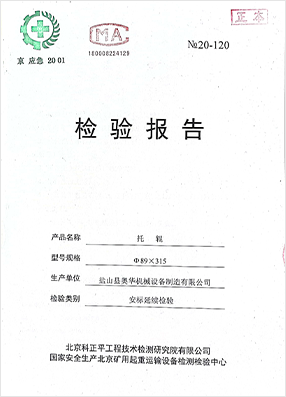 Afrikaans
Afrikaans  Albanian
Albanian  Amharic
Amharic  Arabic
Arabic  Armenian
Armenian  Azerbaijani
Azerbaijani  Basque
Basque  Belarusian
Belarusian  Bengali
Bengali  Bosnian
Bosnian  Bulgarian
Bulgarian  Catalan
Catalan  Cebuano
Cebuano  Corsican
Corsican  Croatian
Croatian  Czech
Czech  Danish
Danish  Dutch
Dutch  English
English  Esperanto
Esperanto  Estonian
Estonian  Finnish
Finnish  French
French  Frisian
Frisian  Galician
Galician  Georgian
Georgian  German
German  Greek
Greek  Gujarati
Gujarati  Haitian Creole
Haitian Creole  hausa
hausa  hawaiian
hawaiian  Hebrew
Hebrew  Hindi
Hindi  Miao
Miao  Hungarian
Hungarian  Icelandic
Icelandic  igbo
igbo  Indonesian
Indonesian  irish
irish  Italian
Italian  Japanese
Japanese  Javanese
Javanese  Kannada
Kannada  kazakh
kazakh  Khmer
Khmer  Rwandese
Rwandese  Korean
Korean  Kurdish
Kurdish  Kyrgyz
Kyrgyz  Lao
Lao  Latin
Latin  Latvian
Latvian  Lithuanian
Lithuanian  Luxembourgish
Luxembourgish  Macedonian
Macedonian  Malgashi
Malgashi  Malay
Malay  Malayalam
Malayalam  Maltese
Maltese  Maori
Maori  Marathi
Marathi  Mongolian
Mongolian  Myanmar
Myanmar  Nepali
Nepali  Norwegian
Norwegian  Norwegian
Norwegian  Occitan
Occitan  Pashto
Pashto  Persian
Persian  Polish
Polish  Portuguese
Portuguese  Punjabi
Punjabi  Romanian
Romanian  Russian
Russian  Samoan
Samoan  Scottish Gaelic
Scottish Gaelic  Serbian
Serbian  Sesotho
Sesotho  Shona
Shona  Sindhi
Sindhi  Sinhala
Sinhala  Slovak
Slovak  Slovenian
Slovenian  Somali
Somali  Spanish
Spanish  Sundanese
Sundanese  Swahili
Swahili  Swedish
Swedish  Tagalog
Tagalog  Tajik
Tajik  Tamil
Tamil  Tatar
Tatar  Telugu
Telugu  Thai
Thai  Turkish
Turkish  Turkmen
Turkmen  Ukrainian
Ukrainian  Urdu
Urdu  Uighur
Uighur  Uzbek
Uzbek  Vietnamese
Vietnamese  Welsh
Welsh  Bantu
Bantu  Yiddish
Yiddish  Yoruba
Yoruba  Zulu
Zulu self aligning roller for belt conveyor
Self-Aligning Rollers for Belt Conveyors Enhancing Efficiency and Reducing Downtime
Belt conveyors are integral to many industrial operations, transporting materials efficiently and effectively across a variety of settings. However, misalignment of conveyor belts can lead to significant operational challenges, including increased wear on components, reduced efficiency, and potential downtimes. One innovative solution to mitigate these issues is the use of self-aligning rollers.
Understanding Self-Aligning Rollers
Self-aligning rollers are specially designed components that help maintain the proper alignment of conveyor belts during operation. Unlike traditional rollers, which may require constant manual adjustment, self-aligning rollers automatically respond to changes in the belt's position. This innovative design features a pivot or adjustable mechanism that allows the roller to move in accordance with the belt’s lateral displacement.
The primary benefit of self-aligning rollers is their ability to minimize belt misalignment. Misalignments can occur due to various factors, including uneven loading, shifting material, or the natural sag of the belt. When the belt drifts off its intended path, it can lead to several issues increased friction, higher energy consumption, and accelerated wear and tear on both the belt and the rollers. By effectively aligning the belt, self-aligning rollers contribute to smoother operation and longer equipment lifespan.
Benefits of Self-Aligning Rollers
1. Reduced Downtime One of the most significant advantages of self-aligning rollers is the reduction in downtime. When a conveyor belt is misaligned, it can halt operations until adjustments are made. By incorporating self-aligning rollers, companies can minimize the time required for maintenance and adjustments, thus increasing overall productivity.
self aligning roller for belt conveyor

2. Lower Maintenance Costs Traditional rollers often require regular maintenance to ensure that they remain aligned and functional. Self-aligning rollers, on the other hand, significantly reduce the need for frequent maintenance checks and adjustments. This not only saves on labor costs but also extends the life of the conveyor belt and associated components.
3. Improved Material Handling Self-aligning rollers help maintain consistent tension on the belt, which is crucial for effective material handling. When the belt is correctly aligned, it reduces the risk of material spillage and ensures even distribution of loads. This leads to more efficient transportation of materials and a safer working environment.
4. Energy Efficiency A misaligned belt can cause increased friction and resistance, which in turn leads to higher energy consumption. Self-aligning rollers help maintain belt alignment, reducing the energy required to operate the conveyor system. This contributes to lower operational costs and a reduced carbon footprint, enhancing the overall sustainability of the operation.
5. Versatility Self-aligning rollers can be utilized in a variety of conveyor systems across different industries, from mining and minerals to food processing and logistics. Their adaptability makes them a valuable addition to any conveyor setup, allowing for enhanced efficiency regardless of the specific application.
Conclusion
In today’s fast-paced industrial landscape, the efficiency of conveyor systems is paramount to maintaining a competitive edge. Self-aligning rollers provide a practical solution to the common issue of belt misalignment, enhancing operational efficiency while simultaneously reducing maintenance needs and downtime. As industries continue to seek ways to optimize their processes, the implementation of self-aligning rollers represents a smart investment for companies looking to improve their conveyor systems and ensure seamless material handling. By embracing technology that promotes better alignment, businesses can unlock higher productivity levels and maintain smooth operational flows, securing their position in a demanding marketplace.
-
Revolutionizing Conveyor Reliability with Advanced Rubber Lagging PulleysNewsJul.22,2025
-
Powering Precision and Durability with Expert Manufacturers of Conveyor ComponentsNewsJul.22,2025
-
Optimizing Conveyor Systems with Advanced Conveyor AccessoriesNewsJul.22,2025
-
Maximize Conveyor Efficiency with Quality Conveyor Idler PulleysNewsJul.22,2025
-
Future-Proof Your Conveyor System with High-Performance Polyurethane RollerNewsJul.22,2025
-
Driving Efficiency Forward with Quality Idlers and RollersNewsJul.22,2025





























